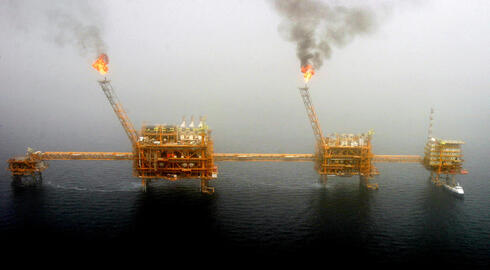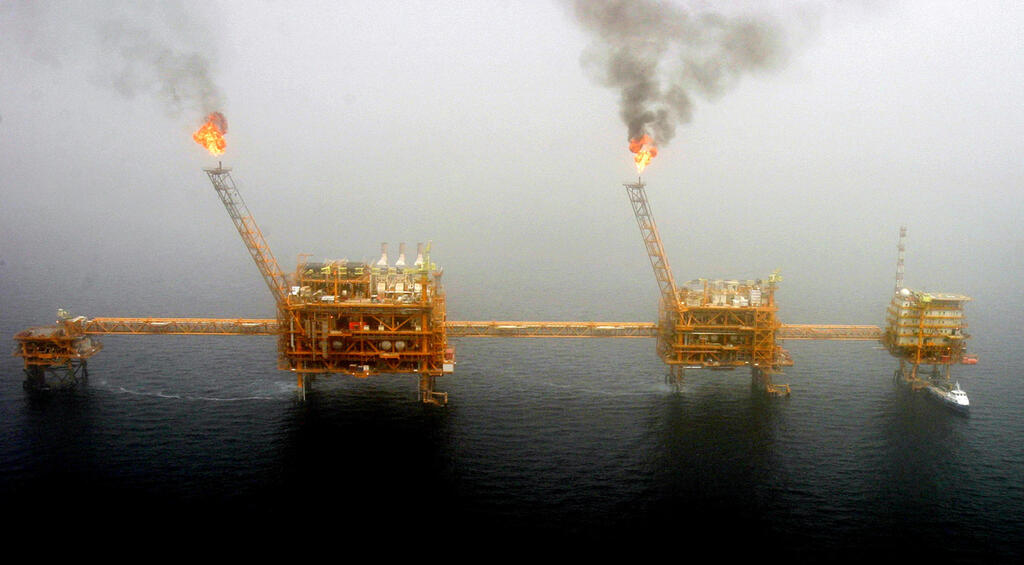
The high stakes of a potential Israeli attack on Iran's oil sector
Why global oil prices could surge and how Saudi Arabia might fill the gap.
In an attempt to convey a sense of business as usual, Iranian Minister of Petroleum Mohsen Paknejad visited the country's main oil and gas facilities on Saturday. Among other locations, the minister visited the province of Asaluyeh, a crucial center for Iran's gas and oil industry, and Kharg Island in the Persian Gulf, which serves as Iran's main oil export terminal.
The Iranian minister claimed that his visit was routine, stating that he was "not worried" about Israeli threats and that the purpose of his visit was to "support the morale of the workers." However, it is hard to separate the timing of the visit from its context, as global media has been intensely covering the potential consequences for the energy market in the event that Israel attacks Iran's facilities following the missile strike on Israel last week.
Global concerns are less about Iran's oil production itself and more about how the country might react if its facilities were attacked by Israel. While Iranian oil production is recovering, estimates place it at around 3.5 million barrels per day, with roughly half being exported. Iran claims its oil export revenues reached about $35 billion last year—an essential lifeline for keeping the Iranian economy afloat.
It is important to note that all data published by Iran and international sources regarding its oil industry should be approached with caution, as most figures are based on estimates, and Iran is not transparent with its reporting. Due to international sanctions, especially those targeting Iran's energy sector, the country uses various methods to bypass restrictions. Even though the U.S. has eased some sanctions enforcement in recent years, Iran continues to obscure the true state of its oil industry.
Iranian production, even if it reaches 4 million barrels per day, represents about 4% of global oil demand. In the unlikely event that an Israeli attack completely halts Iranian production, this is a volume the global market could manage. Several oil-producing countries have excess capacity that remains untapped. Iran's neighbors and OPEC partners—Saudi Arabia and the UAE—could, if needed, quickly inject up to 4.5 million additional barrels per day into the market, offsetting any loss from Iran.
However, this leads to a critical issue: the geographical proximity of these countries to Iran threatens their ability to maintain production. If Iran’s oil facilities are attacked, Iran could retaliate by targeting oil infrastructure in neighboring countries, just as it did in 2019 when it attacked Saudi oil fields. Iran could also disrupt global oil supplies by attempting to close the Strait of Hormuz. Even without direct conflict, any attempt to block these shipping lanes could cause oil prices to spike, as about 20% of the world’s daily oil consumption passes through these waters. The U.S. would likely intervene to keep the strait open, but any disruption, even if brief, could significantly impact global oil prices.
China is expected to be the hardest hit if Iran’s oil output is disrupted. Currently, China is Iran’s primary oil customer, importing around 90% of Iran’s exports—approximately 1.4 million barrels per day. Due to sanctions, Iran exports oil to China using a so-called "shadow fleet," tankers that sail without active tracking systems. These tankers leave Kharg Island, and the oil is transferred to smaller vessels in countries like Malaysia, Bangladesh, the UAE, and Oman, before being shipped to China, disguising the oil's Iranian origin. Iran sells its oil to China at a significant discount compared to market prices and receives payment in Chinese yuan. Since the yuan is not widely traded globally, Iran either purchases goods from China with its oil revenues or accumulates foreign reserves in the Chinese currency.
India is also likely to suffer if oil movement in the Gulf is disrupted. In recent years, India has reduced its oil imports from Iran due to international sanctions and its desire to maintain close relations with the U.S. However, India’s reliance on oil from the Middle East (including the Gulf and Iraq) has grown—over 45% of India’s oil imports now come from the region. If supply chains from the Gulf are disrupted by an Israeli-Iranian conflict, India would face a temporary, but significant, problem.














